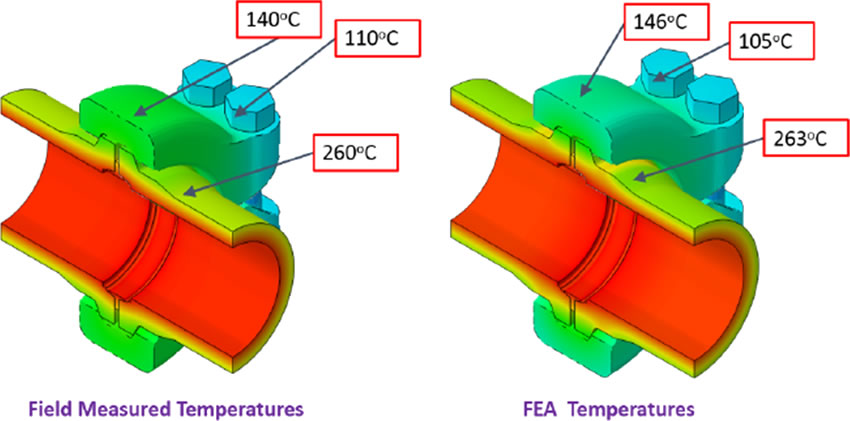Dimensional Control – Post Fabrication Pipe Spool QC Surveys

With the advancements in dimensional technology, obtaining accurate measurements at the worksite has become common practice for most owners and engineering companies. New and replacement piping is being designed from behind desks without the designer visiting the worksite. This means there is no need for string lines, tape measures, or auto levels to obtain measurements or the need for notes on drawings stating “field to verify”.
Despite these advancements, when it comes to the install of piping, it is still like playing Russian roulette on whether the pipe spools will fit or not.
Failure rates are reported between 17% – 38% on spools inspected with these results being in the 70% range if the acceptance criteria was held strictly to industry specification. Failure stats are based on:
| Cause of Rejection | Typical Value | Industry Specification | |
| Dimensional Error | +/- 1/2” | 1/8” | |
| Bolt Hole Rotation | 1/8” | 1/8” | |
| Flange Face Deviance | 1/8” | 1/32” | |
| Wrong Flange Fitted | N/A | N/A | |
| Wrong Spool Configuration | N/A | N/A | |
Failure statistics don’t appear as high during major outages as spools are made to fit or reworked without the knowledge of the cost trackers or upper project management.
The solution to the rework problem is currently to add field welds. Why? Because spools are designed to a high accuracy so why not fabricate them to high accuracy. Is it the lack of skilled fabricators who are unaware of spool manufacturing tolerances or is it the industry’s acceptance of poor quality and rework?
Often the phrase heard at the work site or when at a client meeting is that “we tried using technology and it doesn’t work so we’re not using it”. Just because a line that was scanned or surveyed doesn’t fit, doesn’t mean that the technology didn’t work. The fabricated spools may have had a compound of errors, the system was hard bolted prior to the complete installation of the line or lines were incorrectly set in the rack. Currently, it is seldom investigated as to why the spools never actually fit, it is just assumed that they were measured wrong.
It is proven that the answer to a successful project is to use the correct technology to QC spools prior to installation and not just accept a red line drawing from someone who ran a tape over the spool and thought it was close enough.
The process of Dimensional Control QC is not to pass or fail a pipe spool but to ensure that there are “zero surprises” during the installation.
The project expense to perform dimensional QC of spools at the fabrication shop is minor compared to the cost of installation failure. The true cost savings come from reducing or eliminating rework, which can have significant impact on the schedule.
Multiple handlings of spools are a known safety hazard due to additional rigging and lifting activities. It is in every project’s interest to remove as much unplanned lifting activities as possible. When forced to fit using come-alongs, unnecessary pipe strain is applied, which causes system failures, equipment reliability issues (e.g. rotating equipment) and potential future incidents. Dimensional QC of spools helps to eliminate these issues through inspection for dimensional, flange face and bolt hole errors.
It was claimed by a Project TAR Manager after an event in 2014 that the discovery of errors on two critical path spools using Dimensional Control QC prior to attempted installation saved the project in excess of $150k. Over 700 spools were verified on this project.
An example of dimensional technology receiving the “does not work” accusation was a project in 2015 for an offshore shut down. A new pipe route was designed based on Dimensional Control observations, the spools were laser verified prior to shipment and were fabricated correctly. Upon installation, the offshore construction manager stated that the spools did not fit and were currently in the process of being shipped back to the fabricator to be reworked. However, he was instructed to identify the cause of the failure, prior to shipping the spools back to the fabricator. After reviewing a picture from the installer detailing the error it was immediately identified that the cause was that the spool had been installed upside down. With the upside-down configuration the spool showed a bolt hole alignment issue when set in the apparent correct location. This spool would have been shipped back to the fabricator, possibly cut up and sent back only not to fit again if Dimensional Control had not been carried out, resulting in cost implications and shut down schedule impacts.
QC issues are not unique to projects in the US. Many projects are being shipped overseas where labor is less expensive; however, when working with an unknown fabricator it is unknown what quality of product will be delivered onsite.
Becht Dimensional Control has experience with a project that was NOT surveyed that was delivered from an overseas fabricator. Instead of using centerlines for dimensional reference, the fabricator fabricated all spools using outside of pipe to outside of pipe as the measurement reference. This led to every spool that had an elbow being cut and modified in the field. Setting of bolts one hole square as typical instead of two hole was again a major issue on this project.
When the spools arrive onsite incorrectly fabricated the fabricator will generally hold no accountability and claim installation / design error.
Most people with significant exposure to installation of piping in the field will have experienced a scenario similar to the one stated above and probably will do so again in the future unless there is a will to change the current failure culture by embracing the need for laser verification.
Becht Engineering’s Dimensional Control department offers an effective solution that provides high accuracy, fast results. To learn more on this service contact Becht.
Contact Becht Dimensional Control
or Call Derek Paterson at (281)-323-3287





